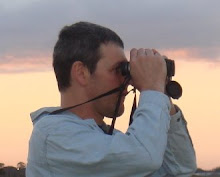
Eared Grebe at Bald Eagle State Park, Nov 6, 2010
The fall weather is finally here! The warblers are gone - mostly. The leaves are changing color and falling from the trees. Football season is at its midpoint. Cold weather is starting to settle in.
And that means ducks and gulls are on their way!
Reports are starting to trickle in from across the county and state. A gull here, a small rafts of ducks there. And with the regular migrants come others from out-of-town. Over the last week or so, a few interesting birds were showing up out at Bald Eagle State Park in Howard (Centre County, PA), so I grabbed my binoculars and put the spotting scope in the car and headed out to the park.
I arrived at the park around 9:00 am on a cold, rainy Saturday morning. I first hit Upper & Lower Greens Run, then headed down to the Rt. 150 overlook, and eventually made my way to the main area of the park. At Lower Greens Run, I spotted a small flock of Bufflehead and a lone Bonaparte's Gull patrolling Sayers Lake. The 150 overlook was quiet.
Upon entering the main area of the park, I headed straight down to the beach to scan for Snow Bunting. I came up empty on the buntings, but did manage to spot a Killdeer probing the sand. There was also a nice-sized flock of starlings and grackles in the trees adjacent to the beach. Most of the other areas of the park were not productive, so I headed out to the Bald Eagle viewing area to get a look at Sayers Dam. That is usually the most productive spot in the park.
I was particularly interesting in checking out the dam area, because Drew Weber spotted several White-winged Scoters there earlier in the morning. I spent about 30 minutes or so scanning the area with my spotting scope, but struck out on the scoters. I did mange to find several Common Mergansers, some Ruddy Ducks, a Common Loon and a flock of Canada Geese. There were several other ducks present, but the combination of the warm air on the surface of the lake and the cold air above caused a lot of refraction - like those wavy lines you see on the distant highway on warm days. Either way, I couldn't make out what the ducks were, so I bagged it and moved on.
Before leaving the park, I decided to search for any Northern Shrikes that may be present. This is about the time of year that one would expect a shrike to show up at the park. I checked several spots where the shrike has been observed in previous years but was unable to find one. But all was not lost. At the west boat launch, I did spot a small flock of American Coots - about 40 in all. I scanned the flock with my binos and picked out three odd birds. Two of them turned out to be female Ruddy Ducks. The other looked like a grebe.
At first glance, I was pretty sure that it was a Horned Grebe - a relatively common grebe for the east coast this time of year. In fact, several were seen at the park earlier in the week. Something about the bird did not sit right, so I went back to the car and grabbed my spotting scope. I got a pretty good look at the bird. To my surprise, it was an Eared Grebe - a western species not typically seen in the east. As the bird was in non-breeding plumage, I had to check for several key field marks to nail the ID: a slightly upturned bill, a peaked crown above the eye and a dusky neck.
To document the bird, I had to borrow my daughter's point-and-shoot digital camera and hold it up to the eye piece of my spotting scope. The resulting photos were of the "bigfoot quality", but sufficient for confirmation. This is the second Eared Grebe for me in Centre County - the first one was spotted in the Retention Pond back by lot 25 on the Penn State campus back in 2006.


